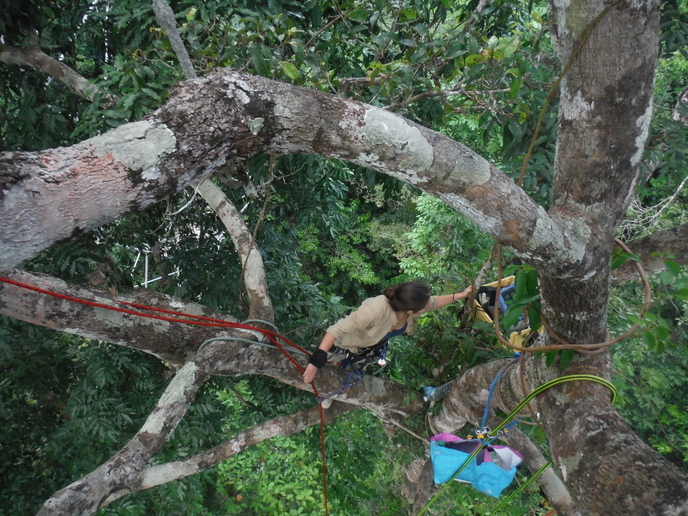How lianas help tropical forests adapt to climate change
Tropical forests play an essential role in the global carbon cycle. Through photosynthesis, trees absorb carbon dioxide. They then store the carbon in their biomass, which reduces the amount of this greenhouse gas in the atmosphere. In fact, according to the Global Forest Atlas(opens in new window), tropical forests contain about 25 % of the world’s carbon. As such, they play an important role in the fight against climate change. The effects of climate change also impact these same tropical forests. For example, over the past few decades, researchers have noted a substantial increase in lianas, the vines that grow into trees. The ERC-funded TREECLIMBERS (Modelling lianas as key drivers of tropical forest responses to climate change) project aimed to shed new light on why lianas are growing at an increasing rate and what the impact of this growth might be. “Although nobody knows for sure, we suspect this increase might be a way for tropical forests to adapt to the realities of climate change,” says Hans Verbeeck, a principal investigator and researcher at the Ghent University(opens in new window) CAVElab(opens in new window). “If this is the case, it could have a significant impact on the long-term carbon balance of tropical forests.”
Deep into the jungle
The team sent researchers deep into the jungles of Costa Rica, Democratic Republic of the Congo, Ecuador, French Guiana, Panama and Rwanda. Armed with terrestrial LIDAR technology, stable water isotopes, and measuring tapes, they carefully inventoried all lianas in large areas of forests and studied their water use and the way they impact forest structure. Their goal: to build the very first mechanistic representation of lianas in vegetation models. “From this work we hoped to gain important insights into how lianas influence the carbon uptake of tropical forests,” explains Verbeeck. “We also wanted to unravel the extent to which lianas contribute to the canopy’s vertical structure.” According to Verbeeck, researchers succeeded in developing a liana plant functional type and integrating it into two vegetation models. “These models enable us to represent the role of lianas in mature and young tropical forests in terms of carbon stocks and fluxes,” he adds. “This will serve as a blueprint for other modelling groups aiming to build liana models.” Researchers also gained important new insights on both the below- and above-ground competition happening between lianas and the trees themselves. “Our findings from French Guiana challenge the long-standing liana deep-rooting hypothesis,” notes Verbeeck. “We’ve already started planning multiple follow-up studies on this topic.”
A significant contribution
In addition to these scientific discoveries, the project team, which included postdocs, PhDs, and master students, made a significant contribution to existing scientific literature. “For example, we found substantial variation in liana functional traits – a finding that challenged our initial plan of clustering all liana species into one plant functional type,” adds Verbeeck. “We also contributed to the scientific community’s understanding of lianas’ behaviour, particularly in terms of their efficient use of water and their abundance in different successional stages of the forest.” Verbeeck says that the TREECLIMBERS team has multiple follow-up projects in the works. They are also working to organise an international liana modelling workshop with other research teams that started to follow the example set by the TREECLIMBERS project.







